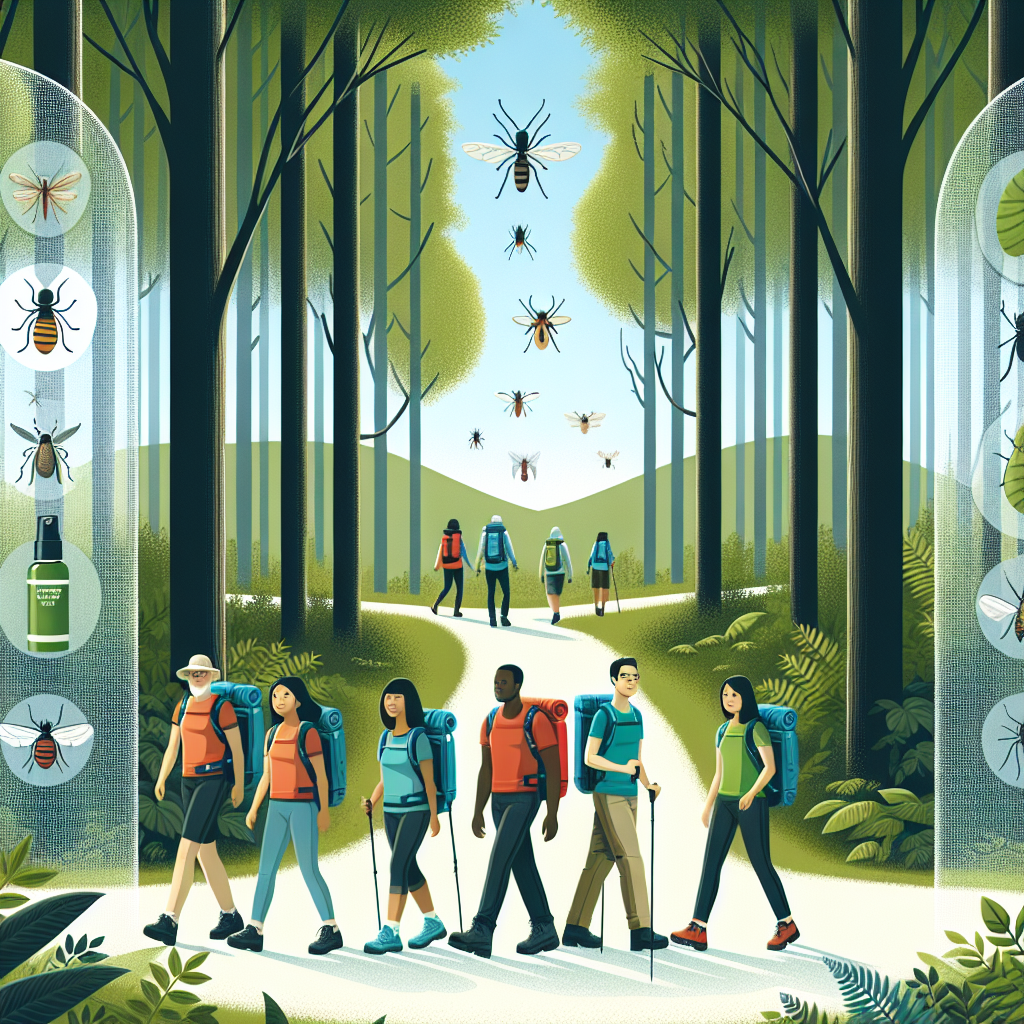Introduction
Welcome, fellow outdoor enthusiast! There’s nothing quite like the call of the wild to rejuvenate the spirit. But let’s face it, the buzzing and biting of insects can turn a grand adventure into a grueling ordeal. Not only are these pests a nuisance, but they also pose real health risks, from itchy welts to serious diseases like Lyme disease and West Nile virus. Fear not, for with the right knowledge and preparation, you can enjoy the great outdoors with minimal insect interference. Let’s embark on this journey to a pest-free hiking experience together.
Understanding Your Adversaries: Common Insects Encountered While Hiking
Knowing what you’re up against is half the battle. The trails are teeming with a variety of insects, each with their own annoyances and threats. Mosquitoes, the infamous whiners of the wilderness, are notorious for spreading diseases like Zika and malaria. Ticks lurk in the underbrush, waiting to latch on and potentially transmit Lyme disease or Rocky Mountain spotted fever. Flies, including those pesky black flies and horseflies, can turn a leisurely hike into a slap-fest. By understanding these common foes and the risks they carry, you’re better equipped to protect yourself.
Pre-Hike Preparation: Steps to Minimize Insect Encounters
Preparation is your first line of defense. Start with selecting the right clothing—light-colored, long-sleeved shirts and pants can be a physical barrier against bites. Tuck your pants into your socks for an extra layer of protection. Choosing an insect repellent is critical. Do you go natural, or chemical? DEET has a proven track record, but natural options like oil of lemon eucalyptus are gaining ground. Whichever you choose, make sure it’s EPA-registered and follow the directions closely.
On the Trail: Best Practices for a Pest-Free Experience
Once you hit the trail, it’s all about vigilance and smart practices. When setting up camp, opt for breezy, sunny areas away from standing water where insects thrive. Manage your scent by avoiding perfumed products and ensure that all food is sealed to avoid attracting unwanted guests. And remember, your repellent is your shield—apply it liberally and according to the label’s instructions.
The Role of Insect Repellent Technology
Repellent technology has come a long way. Today, we have DEET, which has been the gold standard for decades, and picaridin, a less odorous and equally effective option. For those leaning towards a greener approach, natural alternatives like oil of lemon eucalyptus offer a plant-based solution. Make sure to apply your chosen repellent on exposed skin and over clothes, and reapply after sweating or swimming to maintain protection.
Nature’s Defenses: Natural and Environmental Insect Repellents
Nature provides its own defenses, too. Certain plants like citronella, lavender, and eucalyptus are known insect deterrents, and carrying a bouquet or using essential oils can help keep pests at bay. Altering your environment, like clearing away brush near your campsite, can reduce insect habitat. And for the DIY enthusiast, homemade repellent recipes, which often include witch hazel and various essential oils, can be a fun and eco-friendly approach to staying bite-free.
When Bites Happen: First Aid and Treatment
Despite your best efforts, bites can still occur. The key is to recognize the type of bite and treat it accordingly. Clean the area with soap and water to prevent infection and use a cold compress to reduce swelling. Over-the-counter creams can alleviate itching. However, if you experience severe symptoms like difficulty breathing or a rash, seek medical attention promptly.
Post-Hike: Preventing Hitchhikers and Aftercare
The end of your hike doesn’t mean you’re in the clear. Conduct a thorough tick check on yourself, your companions, and pets. Clean your gear to ensure you’re not bringing any stowaways home. If you’ve been bitten, continue to monitor the site for signs of infection or unusual reactions and consult a healthcare provider if necessary.
Conclusion
So there you have it, the ultimate guide to repelling insects on your hiking adventures. With the right preparation, knowledge, and tools, you can fend off pests and reclaim the joy of the outdoors. Stay vigilant, stay prepared, and most importantly, stay bite-free. Happy trails!

